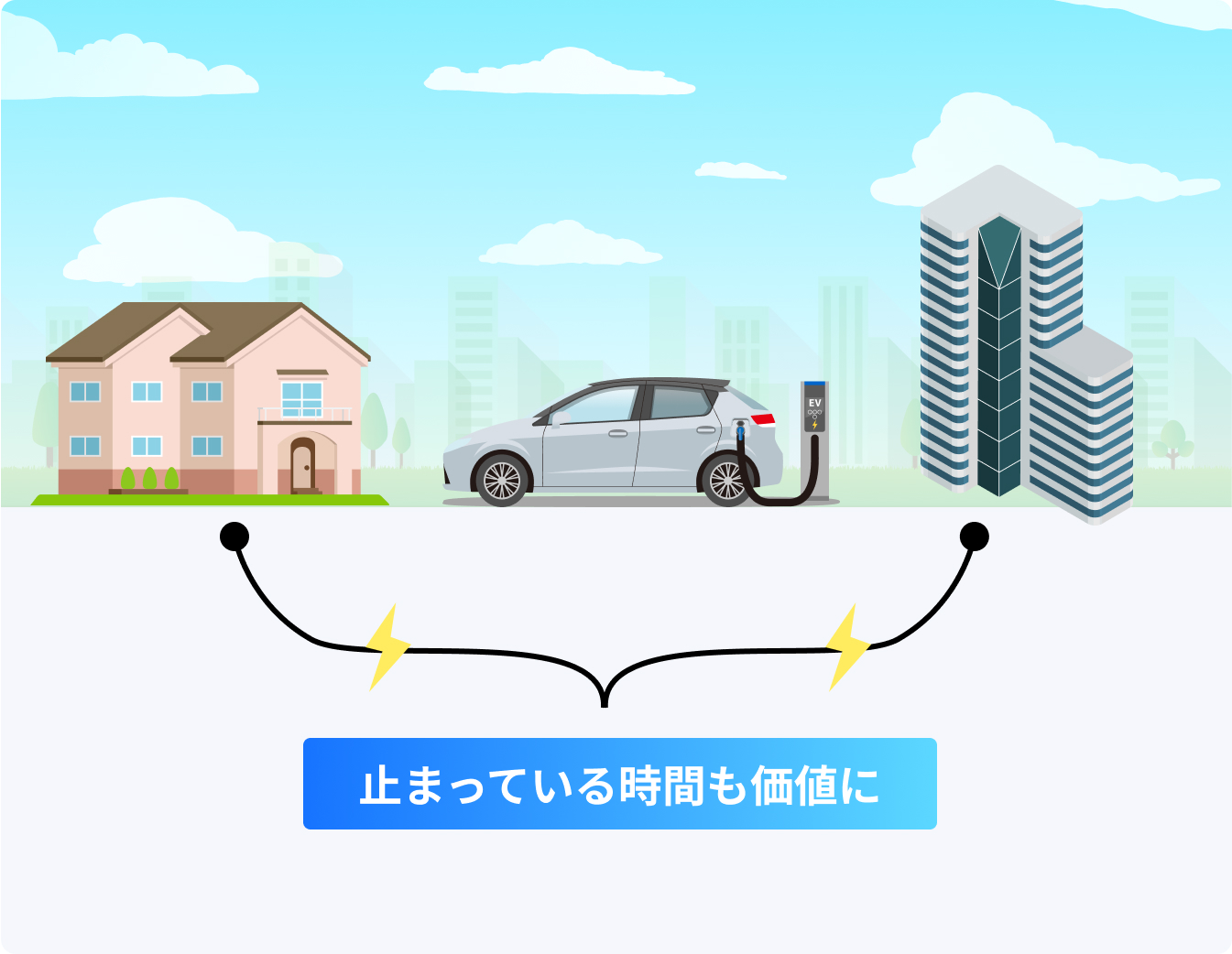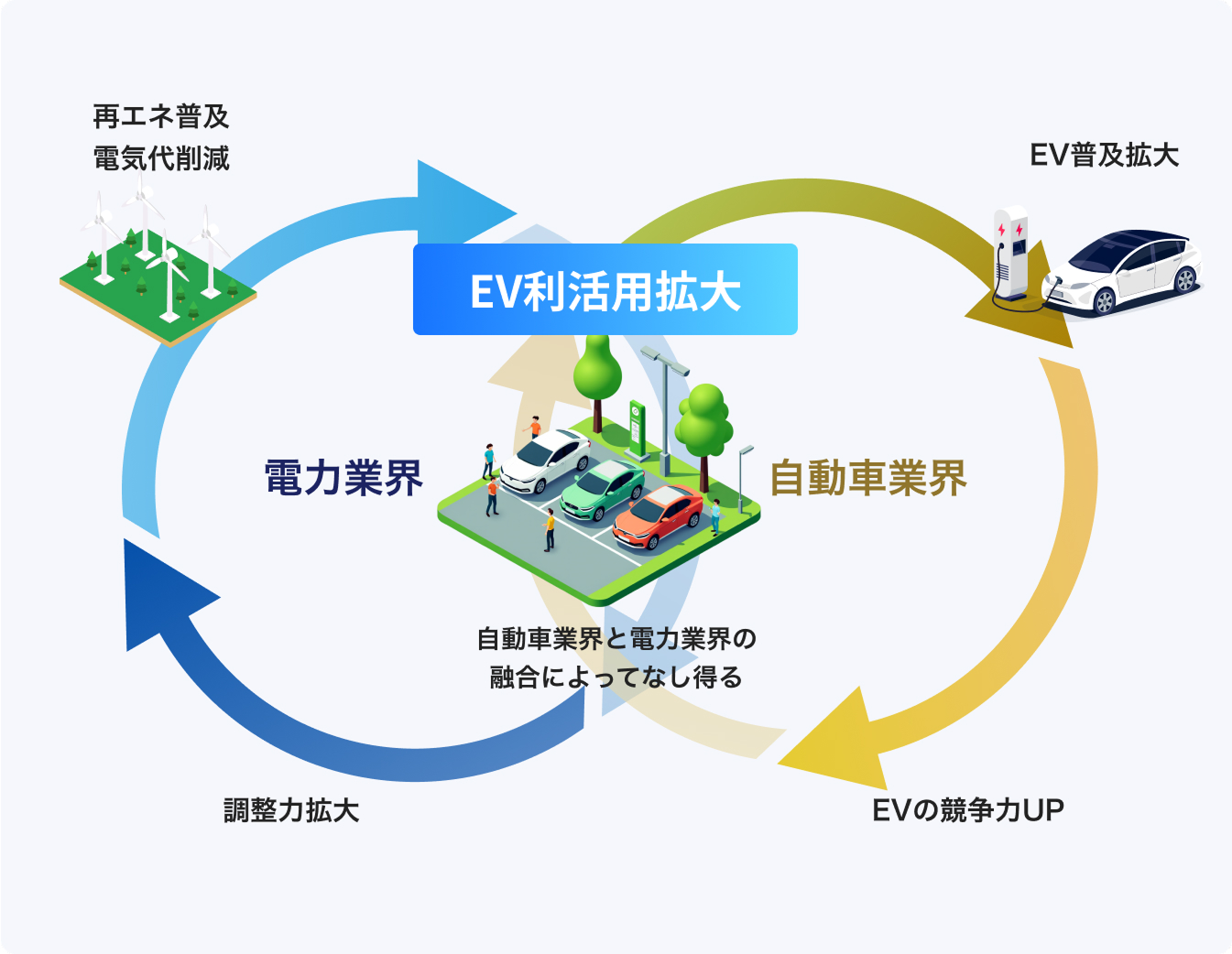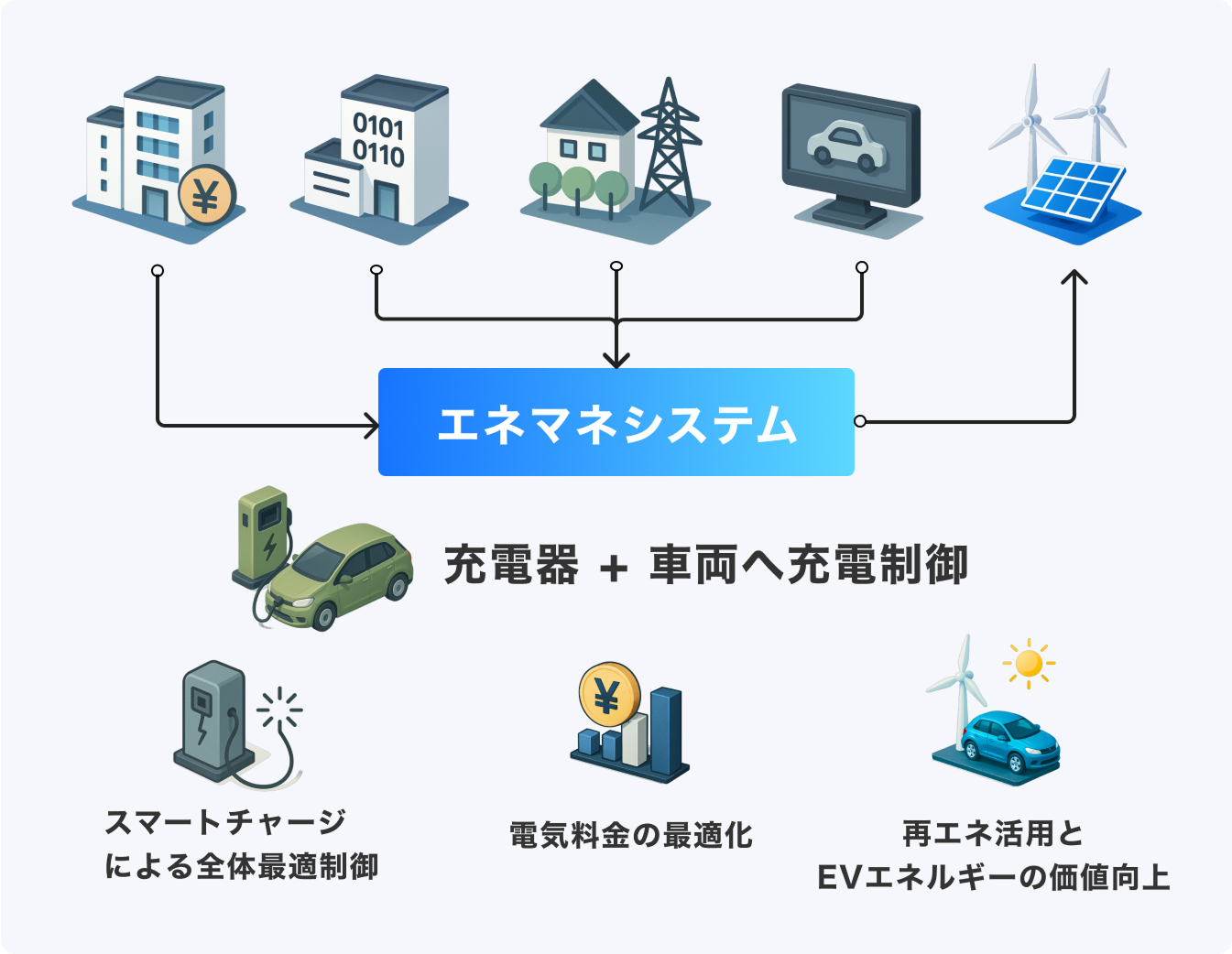ENERGY MANAGEMENT
The day when EVs become power plants.
When EVs are gathered together, they become social infrastructure.
Although each EV is a means of personal transportation, if 10,000 EVs are gathered together under controlled conditions, they become a “mobile storage battery” with an adjustment capacity of tens of thousands of kWh. This is comparable in scale to a medium-sized power plant, and can be used as a distributed energy resource to replace conventional power generation infrastructure.
Furthermore, by utilizing REXEV’s control technology, it is possible to generate energy value equivalent to 100,000 yen per year per EV.
From “an EV that is just to have” to “an EV that creates value.”
That is the future that REXEV envisions.











